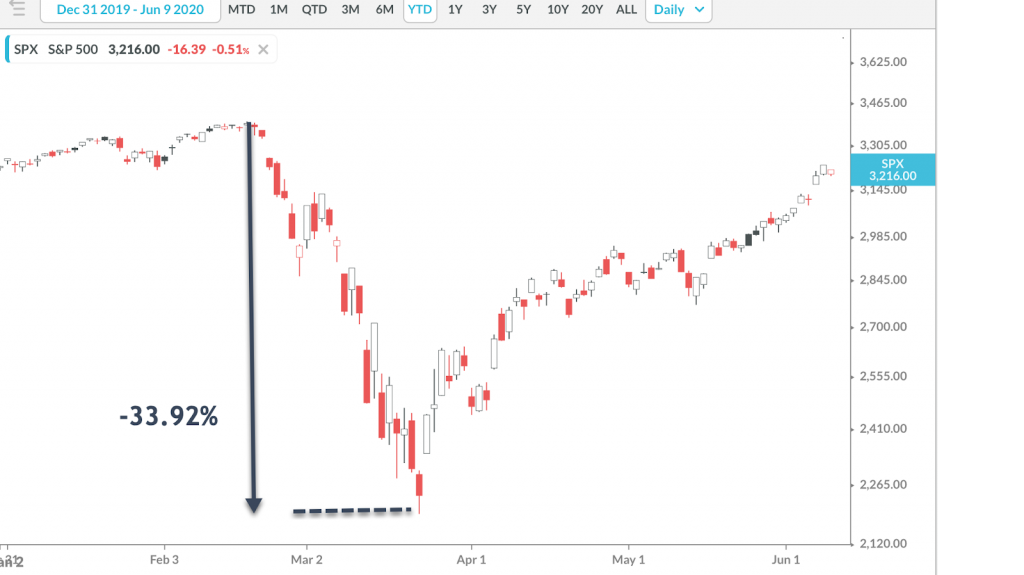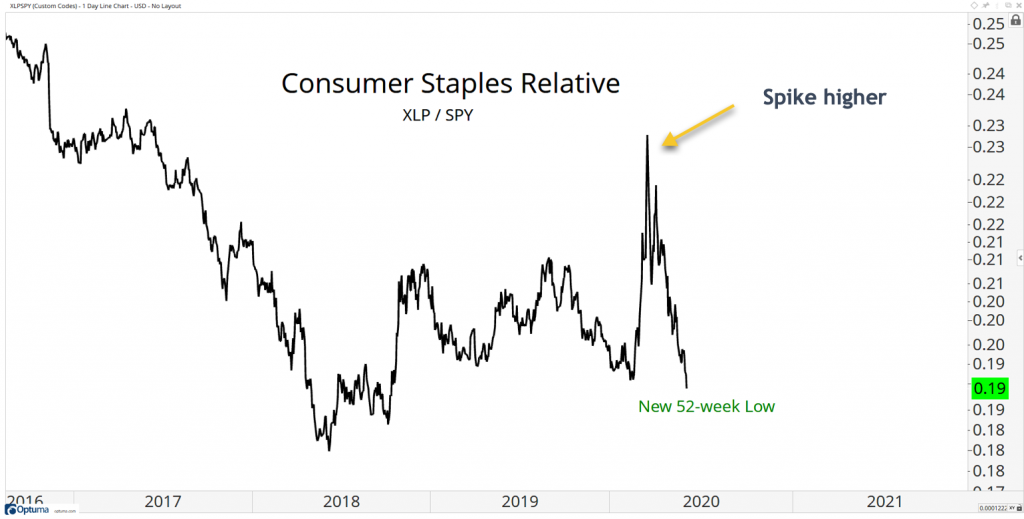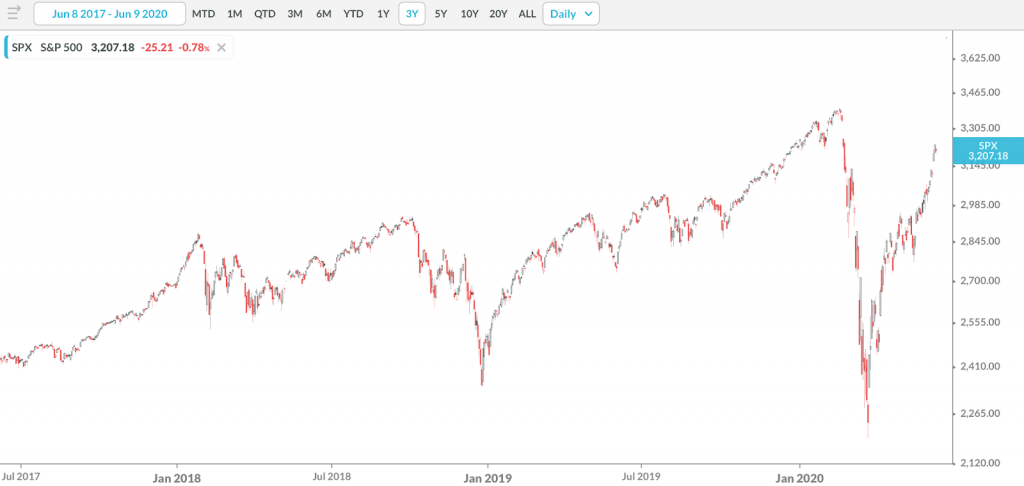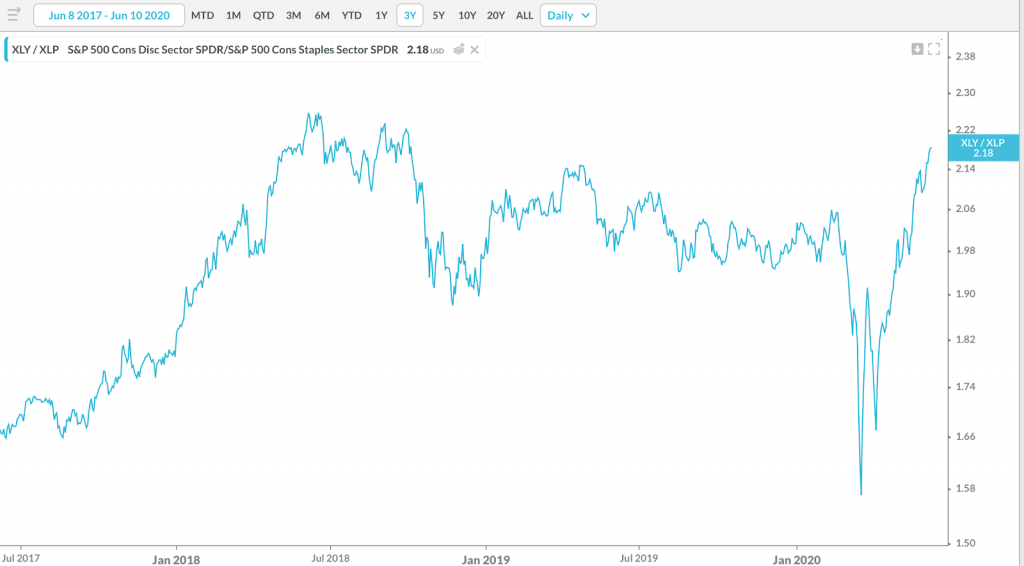Related Blogs
June 10, 2020 | Michael Reilly
 That’s right, I said I’m happy!
That’s right, I said I’m happy!
Because when Staples make new lows relative to the S&P 500, believe it or not, it’s usually a good sign for the market.
We all just witnessed history. Governments around the globe took the unprecedented action of shutting down economies to combat the spread of the COVID19 pandemic.
And when they did, global markets got crushed… It only took 24 trading days (Feb 19-March 23) for the market (S&P 500) to reverse from record highs, closing down 33.92%.
(Click any image to enlarge)
Businesses closed, unemployment skyrocketed and investors panicked.
And what happens when consumers are worried about the economy, jobs and falling 401K balances?
They collectively tighten their belts, they get defensive – and that means only spending on things you really, really need – enter Consumer Staples!
Consumer Staples are the things we need vs. the things we want. For that reason, Staples are considered a defensive sector.
And that’s why Consumer Staples stocks rise during economic and market worries, because It doesn’t matter how bad things get, we’re still going to brush our teeth and wash our clothes.
So, why am I happy Consumer Staples are hitting 52 week relative lows?
Well, because when the S&P 500 is falling apart, Staples shine.
And when Consumer Staples are breaking down to new 52-week relative lows, that’s usually in an environment when stocks in general are doing well.
You can see this relationship using a relative strength chart comparing Consumer Staples – using the iShares Consumer Staples ETF (XLY) as our sector proxy, to the S&P 500 Index.
When the line chart is rising, Consumer Staples are outperforming the broader market (S&P) and when it is falling, Staples are underperforming the market.
Here’s a chart of the S&P 500 – see how Staples advanced when the market collapsed and have fallen relative to the market as the S&P rose?
And here’s a different twist using the relative strength of Consumer Staples to gauge the market’s appetite for risk.
It’s the ratio between Consumer Staples and Consumer Discretionary stocks.
In this ratio, instead of comparing Staples to the S&P 500, we’re comparing the relative strength of Staples to Discretionary stocks, using the iShares sector ETF Funds XLY and XLP.
Here’s how it works, when the blue line is rising, Discretionary stocks are outperforming Staples stocks. When the line is falling, Staples stocks are outperforming Discretionary. And that’s the key!
Because what do we know about Discretionary stocks? They’re not defensive! They’re the products we buy when we’re feeling good about our future prospects – the things we buy when we aren’t worried.
Discretionary stocks are companies where we spend our discretionary income: Autos, Retailers, Homebuilders, etc.
Historically, that’s not a bearish characteristic for the stock market.
So this relative strength relationship between Consumer Staple and Discretionary is worth keeping an eye on to give a little more insight into the overall trend of the market.
Of course, if you don’t have the time to watch the market this closely yourself, you’ve always got the option of letting Rowe Wealth do it for you!
These are exactly the kind of factors we keep an eye on when constructing our model portfolios for maximum long-term investment gains.
If you’re not positive your portfolio is properly structured to take advantage of this truly unique market, chances are you’re losing out on some huge profits.
For investors with portfolios valued at least $500,000 we offer completely free evaluations that will quickly allow you to pinpoint areas of weakness in your current holdings.
Simply click here to see available appointment times.
And, as always, invest wisely.

Tags

Get Our FREE Guide
How to Find the Best Advisor for You
Learn how to choose an advisor that has your best interests in mind. You'll also be subscribed to ADAPT, Avalon’s free newsletter with updates on our strongest performing investment models and market insights from a responsible money management perspective.





